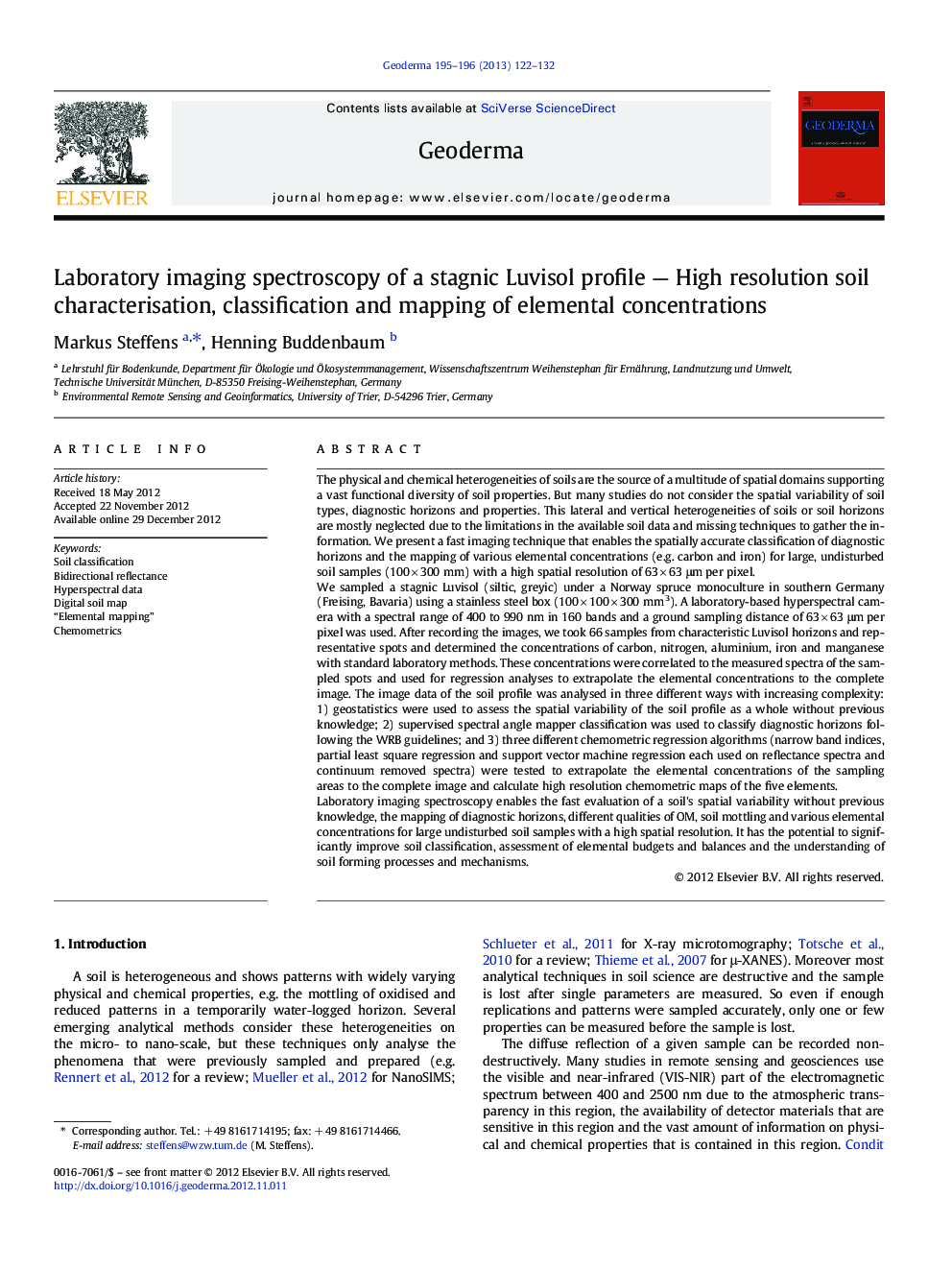| کد مقاله | کد نشریه | سال انتشار | مقاله انگلیسی | نسخه تمام متن |
|---|---|---|---|---|
| 4573548 | 1629489 | 2013 | 11 صفحه PDF | دانلود رایگان |

The physical and chemical heterogeneities of soils are the source of a multitude of spatial domains supporting a vast functional diversity of soil properties. But many studies do not consider the spatial variability of soil types, diagnostic horizons and properties. This lateral and vertical heterogeneities of soils or soil horizons are mostly neglected due to the limitations in the available soil data and missing techniques to gather the information. We present a fast imaging technique that enables the spatially accurate classification of diagnostic horizons and the mapping of various elemental concentrations (e.g. carbon and iron) for large, undisturbed soil samples (100 × 300 mm) with a high spatial resolution of 63 × 63 μm per pixel.We sampled a stagnic Luvisol (siltic, greyic) under a Norway spruce monoculture in southern Germany (Freising, Bavaria) using a stainless steel box (100 × 100 × 300 mm3). A laboratory-based hyperspectral camera with a spectral range of 400 to 990 nm in 160 bands and a ground sampling distance of 63 × 63 μm per pixel was used. After recording the images, we took 66 samples from characteristic Luvisol horizons and representative spots and determined the concentrations of carbon, nitrogen, aluminium, iron and manganese with standard laboratory methods. These concentrations were correlated to the measured spectra of the sampled spots and used for regression analyses to extrapolate the elemental concentrations to the complete image. The image data of the soil profile was analysed in three different ways with increasing complexity: 1) geostatistics were used to assess the spatial variability of the soil profile as a whole without previous knowledge; 2) supervised spectral angle mapper classification was used to classify diagnostic horizons following the WRB guidelines; and 3) three different chemometric regression algorithms (narrow band indices, partial least square regression and support vector machine regression each used on reflectance spectra and continuum removed spectra) were tested to extrapolate the elemental concentrations of the sampling areas to the complete image and calculate high resolution chemometric maps of the five elements.Laboratory imaging spectroscopy enables the fast evaluation of a soil's spatial variability without previous knowledge, the mapping of diagnostic horizons, different qualities of OM, soil mottling and various elemental concentrations for large undisturbed soil samples with a high spatial resolution. It has the potential to significantly improve soil classification, assessment of elemental budgets and balances and the understanding of soil forming processes and mechanisms.
► Fast imaging technique that records VIS-NIR reflectance of a soil profile (100 × 300 mm).
► Data is recorded as a continuous spectrum with a spatial resolution of 63 × 63 µm per pixel.
► Geostatistics were used to assess the spatial heterogeneity of the soil profile.
► Classification analyses were used to identify diagnostic horizons.
► Regression analyses predicted elemental maps with high statistical power for C, N, Al, Fe, Mn.
Journal: Geoderma - Volumes 195–196, March 2013, Pages 122–132